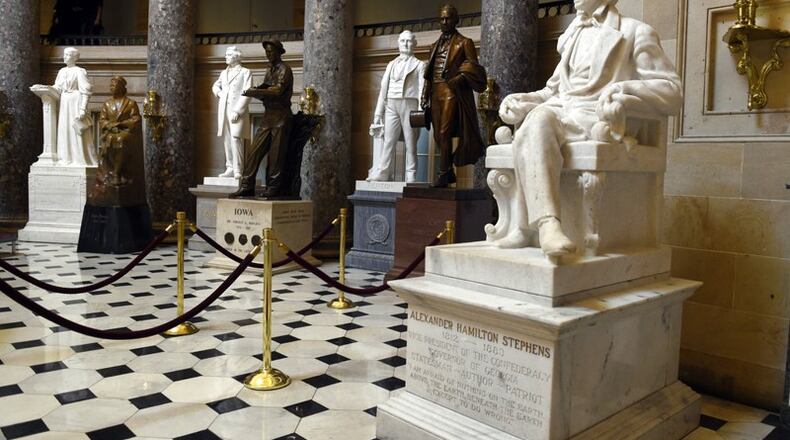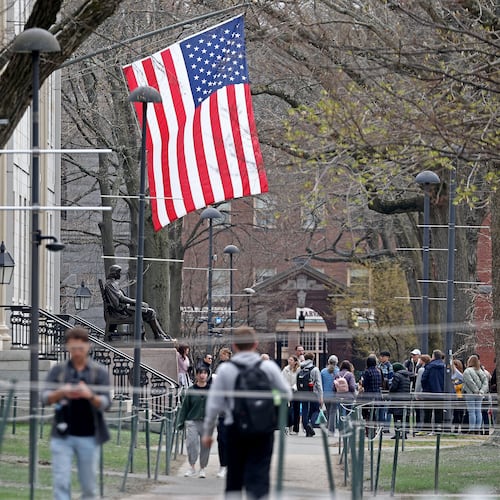Dear Georgia General Assembly and Gov. Nathan Deal:
We are proud Georgians. We are also the great, great, great grand-nephews of Alexander H. Stephens, vice president of the Confederacy. As far as we know, he claimed no direct descendants and we are among his closest living relatives. We are writing to urge you to remove the statue of Stephens currently sitting in the U.S. Capitol’s Statuary Hall.
We realize many people have never heard of Alexander H. Stephens. If you have, it was probably in a history class or in reference to the now-infamous “Cornerstone Speech” where he described the foundational principles of the Confederate government. Slavery and white supremacy formed the bedrock.
In the speech, Stephens noted that most of the people who wrote the founding documents of the United States believed “that the enslavement of the African was in violation of the laws of nature; that it was wrong in principle, socially, morally, and politically.” To the contrary, he said, they were wrong.
“[Their ideas] rested upon the assumption of the equality of races. This was an error. It was a sandy foundation, and the government built upon it fell when the ‘storm came and the wind blew.’
“Our new government is founded upon exactly the opposite idea; its foundations are laid, its cornerstone rests, upon the great truth that the negro is not equal to the white man; that slavery subordination to the superior race is his natural and normal condition. This, our new government, is the first, in the history of the world, based upon this great physical, philosophical, and moral truth.”
We know people who want Confederate statues to stay standing because they see them as memorials for lives lost or symbols of the willingness to fight for a cause. Regardless of why individuals took up arms, the ultimate cause of the Confederacy was the preservation of slavery and white supremacy. Stephens made that fact perfectly clear, but we understand that generations of white Southerners have been taught to deny or diminish it. We understand because we share the experience.
We grew up with the hazy view of history that results from selective remembering, and we inherited “Lost Cause” myths that emerged after the Civil War to sanitize the Confederacy and justify Jim Crow. We learned that Alexander H. Stephens initially opposed secession, but not that he spent his entire political career maneuvering to preserve and expand slavery. Thinking back, small details we heard amplify massive silences in the stories we were told. We learned the name of Stephens’ dog. But nobody around us ever quoted or even mentioned the “Cornerstone Speech.”
We had to unlearn the Lost Cause version of history. It took studying and struggling with our relationship to the past in an ongoing process of which this letter is both a part and a product. It was uncomfortable to shatter our own illusions because we want to be proud of who we come from, but we invite you to join us in this long-overdue work because those feelings are nothing compared to the suffering that such illusions enabled.
Lost Cause monuments need to go because they hide far more history than they reveal, and the statue of Stephens is a prime example of this smoke and mirrors act. In 1902, a state commission decided that he should represent Georgia in the U.S. Capitol. The decision came amidst a surge in construction of monuments to former Confederates, which followed the overthrow of multiracial state governments and the violent entrenchment of Jim Crow regimes. Remarks at unveilings around the South often made the connection between those two trends explicit. The towering monuments assured everyone, especially black Southerners, that white supremacist rule had returned.
It was not until the 1920s that Georgia managed to arrange for a Stephens statue to go to Washington. In December 1927, thousands of Georgians, including our grandfather and great-grandparents, traveled to the U.S. Capitol for the dedication. If the presence of Confederate flags and heritage organizations at the statue’s unveiling did not confirm its core meaning, the inscription did. At the top of the white marble podium, above all his other titles, was his most celebrated office — “Vice President of the Confederacy.”
The man who etched those words was sculptor Gutzon Borglum, a Klan sympathizer renowned in Georgia for designing the Confederate monument at Stone Mountain, the site where the KKK had announced its recent rebirth. At the dedication of the Stephens statue, Borglum waxed poetic about the need to build Confederate monuments so that “our children and our children’s children” would have “true records of what manner of men they were.” We are those “children’s children,” and we know now that these statues do not preserve the truth. They conceal it.
Confederate monuments need to come down. Put them in museums where people will learn about the context of their creation, but remove them from public spaces so that the descendants of enslaved people no longer walk beneath them at work and on campus. Remove them so that children never again gaze up at them from the swingsets of their local parks. Some of our relatives may disagree with our proposal, but they instilled values in us that made it possible for us to write these words: remove the statue of Alexander H. Stephens from the U.S. Capitol. Alabama has already replaced one of its Confederate monuments in the Statuary Hall and Florida has initiated the process of replacing its Lost Cause statue there. We urge Georgians to join us in calling for our state to do the same.
When regimes change, their monuments usually fall. Movements led largely by descendants of enslaved people forced changes to the regimes of slavery and Jim Crow. Most white Southerners denounce those systems today, but for too long too many of us have accepted stories and statues used to prop them up.
Recent acts of white supremacist terrorism in Charleston and Charlottesville are glaring reminders that the past lives on in the present, and the ongoing history of white supremacy is visible every day — from predatory lending and gentrification, to hiring discrimination and voter suppression, to the targeted policing and incarceration of black communities. While not enough, the removal of Confederate symbols is a necessary step. Help us take responsibility for this history now and refuse to pass these monuments on to yet another generation.
Sincerely,
Alexander M. Stephens and Brendan A. Stephens
About the Author
Keep Reading
The Latest
Featured



